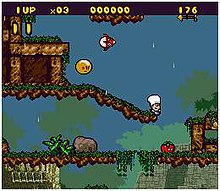
Zool: Ninja of the Nth Dimension is a platform video game developed and published by Gremlin Graphics. It was marketed as a rival to Sega's Sonic the Hedgehog. Originally released for the Amiga home computer in October 1992, the game was subsequently ported to Sega Genesis, Super Nintendo Entertainment System, Master System, Game Boy and Game Gear, as well as other home computers. A sequel, Zool 2, was released in 1993. A remastered version of the original game, titled Zool Redimensioned, was developed by Sumo Digital Academy and published by Secret Mode for Windows, PlayStation 4 and Xbox One in August 2024.

The NewZealand Story is a platform game developed and released in arcades by Taito in 1988. The concept and setting were inspired by a holiday trip in New Zealand by one of the Taito programmers. The player controls Tiki (ティキ), a kiwi who must save his girlfriend Phee Phee (ピューピュー) and several of his other kiwi chick friends who have been kidnapped by a large blue leopard seal. While avoiding enemies, the player has to navigate a scrolling maze-like level, at the end of which they release one of Tiki's kiwi chick friends trapped in a cage. In 2007, the arcade game received a remake for the Nintendo DS under the title New Zealand Story Revolution.

Sunset Riders is a side-scrolling run and gun video game developed and released by Konami as an arcade video game in 1991. It is set in the American Old West, where the player(s) take control of bounty hunters who are seeking the rewards offered for various criminals.

Smash TV is a 1990 arcade video game created by Eugene Jarvis and Mark Turmell for Williams Electronics Games. It is a twin-stick shooter in the same vein as 1982's Robotron: 2084, which was also co-created by Jarvis. The Super Nintendo Entertainment System, Genesis, Master System, and Game Gear versions are titled Super Smash TV.
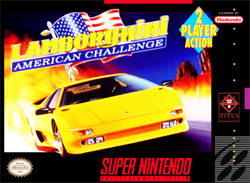
Lamborghini American Challenge is a 1992 racing video game developed and published by Titus France for the Amiga, Amstrad CPC, Atari ST, Commodore 64, MS-DOS, Super NES, Amiga CD32, and Game Boy.

Cool Spot is a 1993 platform game developed by Virgin Games for the Mega Drive/Genesis, Super Nintendo Entertainment System, Master System, Game Gear, Game Boy, Amiga, and MS-DOS. The title character is Cool Spot, a mascot for the soft drink brand 7 Up. Cool Spot's appearance in his own video game came at a time when other brand mascots were appearing in their own video games.

Wizkid: The Story of Wizball II is a humorous action game for the Amiga, Atari ST, and IBM PC compatibles. It was developed by Sensible Software and published by Ocean Software in 1992. Wizkid is the sequel to 1987's Wizball.

Jungle Strike is a video game developed and published by Electronic Arts in 1993 for the Sega Genesis. The game was later released on several other consoles such as the Super Nintendo Entertainment System (SNES), and an upgraded version was made for DOS computers. The Amiga conversion was the responsibility of Ocean Software while the SNES and PC DOS versions were that of Gremlin Interactive, and the portable console versions were of Black Pearl Software. It is the direct sequel to Desert Strike and is the second installment in the Strike series. The game is a helicopter-based shoot 'em up, mixing action and strategy. The plot concerns two villains intent on destroying Washington, D.C. The player must use the helicopter and occasionally other vehicles to thwart their plans.

Terminator 2: Judgment Day or T2 is a light gun shooter based on the film of the same name, produced by Midway Manufacturing Company as an arcade video game in 1991. Developed in tandem with the movie, several actors from the film reprise their roles for the game and are featured as part of the game's photorealistic digitized graphics. The game's plot largely follows that of the film, casting up to two players as the T-800 "terminator" cyborg, sent back in time to protect John Connor from assassination by the T-1000 terminator. A success in arcades, home conversions of the game were released by Acclaim Entertainment for various platforms under the title of T2: The Arcade Game to avoid confusion with the numerous tie-in games also based on the movie.

Sleepwalker is a platform game developed by CTA Developments and published by Ocean Software for the Amiga, Amiga CD32, Commodore 64 and Atari ST in 1993. It was later ported to MS-DOS.

Chō Jikū Yōsai Macross: Scrambled Valkyrie is a 1993 shmup video game for the Super Famicom, developed by Winky Soft and published by Zamuse.
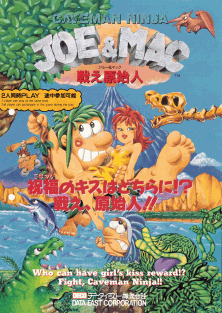
Joe & Mac, also known as Caveman Ninja and Caveman Ninja: Joe & Mac, is a run and gun platform game released as an arcade video game by Data East in 1991. It was adapted for the Super NES, Mega Drive/Genesis, Nintendo Entertainment System, Game Boy, Amiga, Zeebo, Nintendo Switch, and IBM PC compatibles.

The Addams Family is a platform game based on the 1991 film of the same name and developed and published by Ocean Software. It was released for home consoles such as the Super Nintendo Entertainment System, computers such as the Amiga, and handheld consoles like the Game Boy.

Predator is a 1987 side-scrolling action game based on the 1987 film Predator, and the first game based on the franchise.

Home Alone is the title of several tie-in video games based on the 1990 film of the same name written by John Hughes. Versions were released for the Nintendo Entertainment System, Game Boy, Super Nintendo Entertainment System, Master System, Sega Genesis, Game Gear, Amiga, and MS-DOS platforms. The games were released between 1991 and 1992, each with different gameplay.

CJ's Elephant Antics is a platform game developed by Genesis for the Commodore 64 with conversions made for the Amiga, Atari ST, ZX Spectrum and Nintendo Entertainment System. All ports were handled by Genesis with the exception of the ZX Spectrum version which was handled by Big Red Software. The computer versions were published by Codemasters in 1991, with the NES game arriving in 1992 as part of the unlicensed compilation cartridge Quattro Arcade. The player controls a baby elephant by the name of Columbus Jumbo on his way home to Africa.
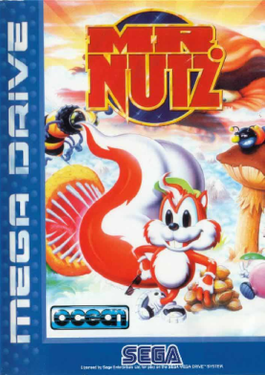
Mr. Nutz (ミスターナッツ) is a 2D side-scrolling platform game published by Ocean Software. It was released for the Super Nintendo Entertainment System in late 1993 in Europe and in North America and Japan in 1994. In 1994, it was released for the Mega Drive as Ocean's first Sega game, and on the Game Boy. It was also released on the Sega Channel in 1995, the Game Boy Color in 1999, and remade for the Game Boy Advance in 2001.

Magic Boy is a platform game developed by Blue Turtle and published for the Amiga, Atari ST, and MS-DOS by Empire Interactive in 1993. A Super Nintendo Entertainment System version was published in 1996 in North America and Europe by JVC Musical Industries.
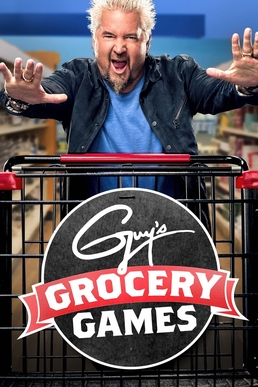
Guy's Grocery Games is an American reality competition television series hosted by Guy Fieri and his son Hunter on Food Network. Each episode features four chefs competing in a three-round elimination contest, cooking food with ingredients found in a supermarket grocery store as Guy Fieri poses unusual challenges to them. The winning chef of the episode can collect up to $20,000 in a shopping spree bonus round. The show often features chefs from Diners, Drive-Ins, and Dives, another show hosted by Fieri. The show Dessert Games was a short-lived spin-off.

The Lost Vikings is a 1993 puzzle-platform game developed by Silicon & Synapse and published by Interplay. It was initially released for the Super NES, then subsequently released for the Amiga, Amiga CD32, MS-DOS, and Mega Drive/Genesis. The Mega Drive/Genesis version contains five stages not present in any other version of the game, and can also be played by three players simultaneously. Blizzard re-released the game for the Game Boy Advance in 2003. In 2014, the game was added to Battle.net, emulated through DOSBox. In celebration of the company's 30th anniversary, The Lost Vikings was re-released for Microsoft Windows, Nintendo Switch, PlayStation 4 and Xbox One as part of the Blizzard Arcade Collection in February 2021.

